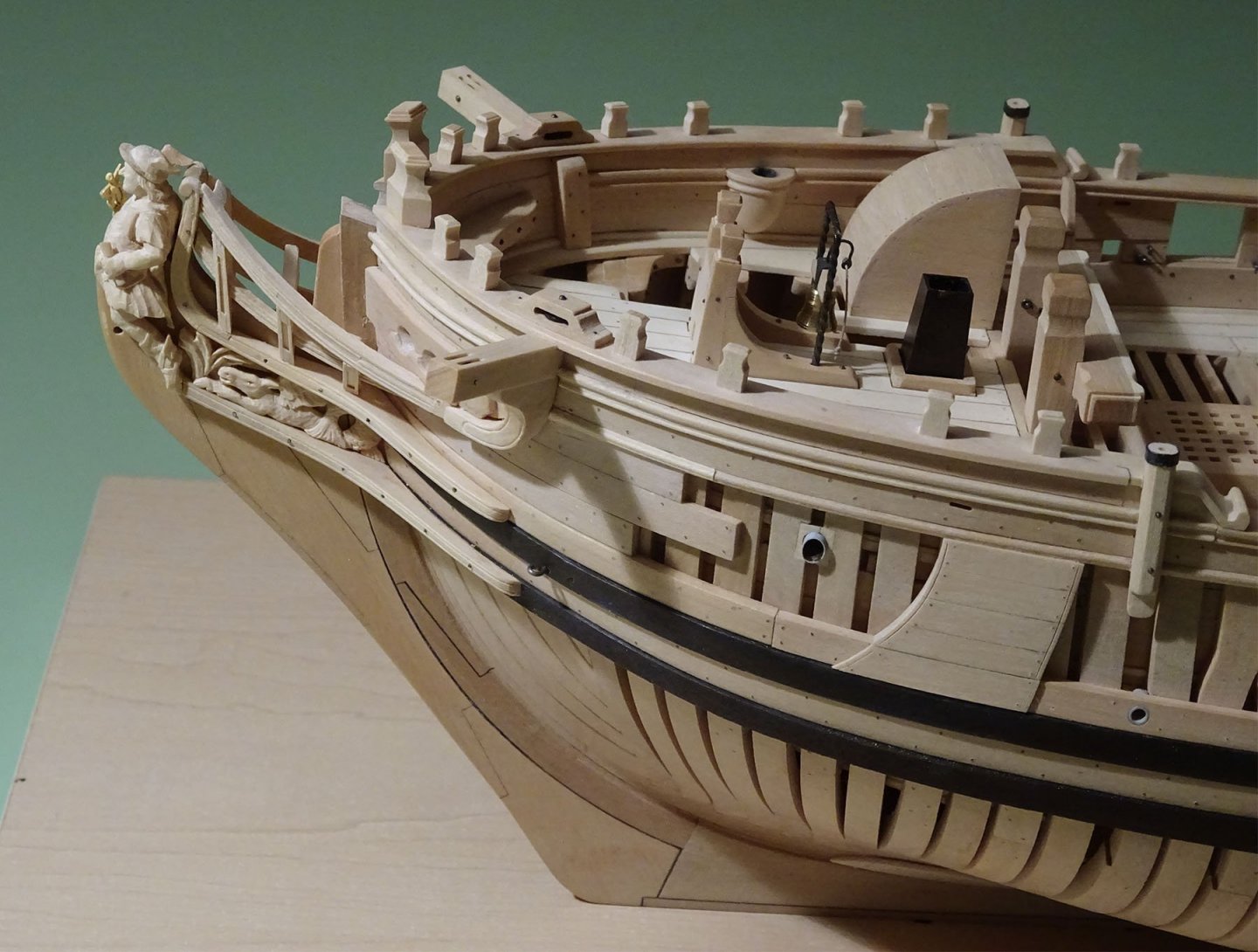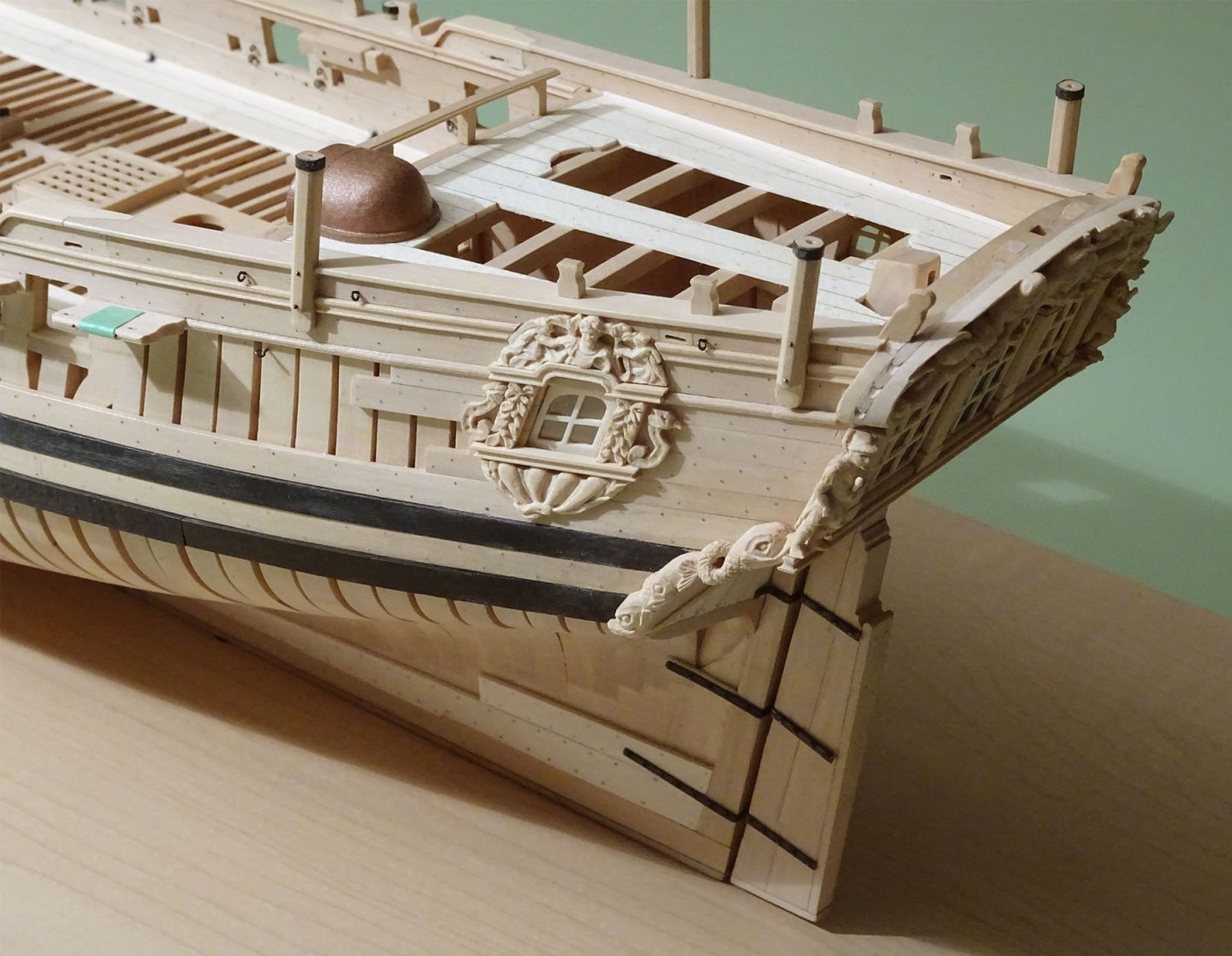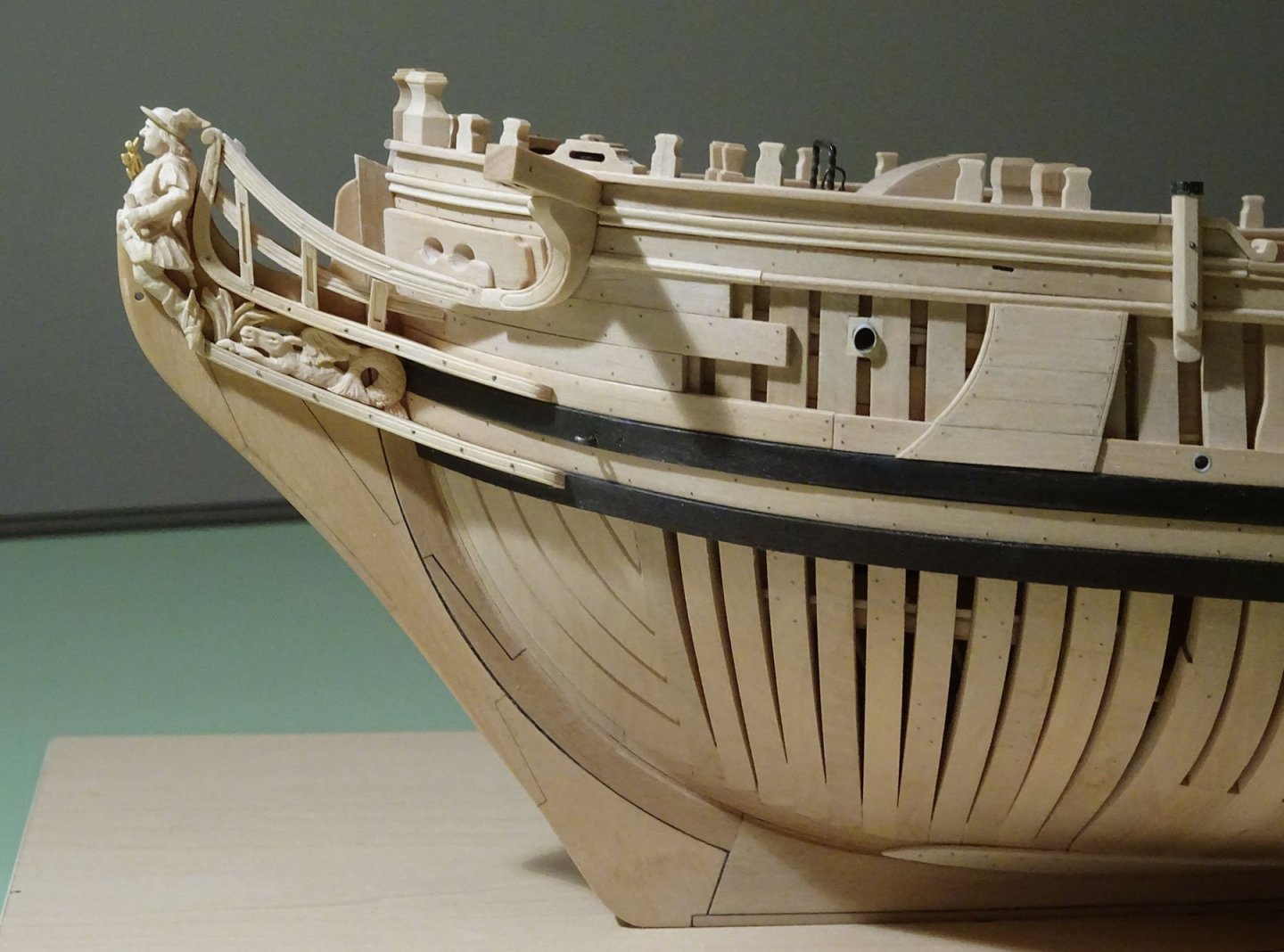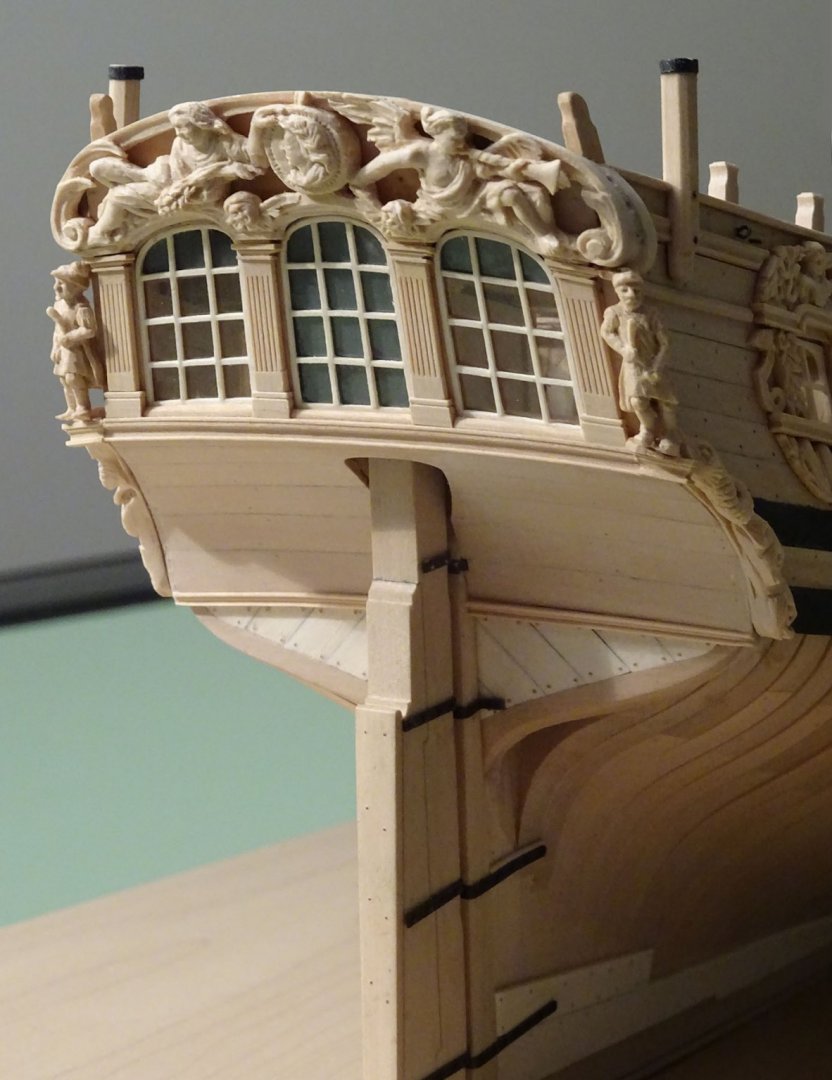-
Posts
13,267 -
Joined
-
Last visited
Content Type
Profiles
Forums
Gallery
Events
Everything posted by druxey
-
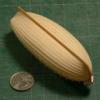
HMS FLY by cafmodel - 1/48
druxey replied to cafmodel's topic in - Build logs for subjects built 1751 - 1800
Sailor: the steps are cut into the fore deadwood as the base for the cant frames. If this is a foreign language for you, you should read up about it in a standard text on wooden warship construction like: Longridge, The Anatomy of Nelson's Ships Goodwin, The Sailing Man of War Both of these books are highly recommended.- 59 replies
-
If I understand your question correctly, your issue is with the varied thicknesses of planking as you approach the outer counter timbers. I believe that the wale thickness diminishes as it approaches the stern to that of the planking between the wales. I think this is 3" in your instance. This partially solves the issue. Secondly, the outer light of the stern gallery is a dummy one, so is boarded in anyway. One will not see the plank ends here. I recall this being the only reasonable solution when I built Polyphemus, 64 guns of 1781, some years ago.
-

ancre Le François 1683 by jose_b - Scale 1:48
druxey replied to jose_b's topic in - Build logs for subjects built 1501 - 1750
Jose: your framing work is beautifully done, but I repectfully agree with Hubac. Please consider what he has suggested. -
However, the rowers were not a Broadway chorus line: the slight variation in oar placement makes the overall effect more realistic. Looks good to me!
-
You must use a very low speed when applying poly. I can just see spraying it over everything if I tried that under power! Looking great, Keith.
-
Thanks for the explanation, Eberhard. Now I wonder if mica is also a possible material to work with....
-
This stern is the ultimate expression of my father's dictum, "Never make thing simple if you can make it complicated"! You are making good headway on interpreting this incredibly complex area of the ship. I appreciate the amount of thought that you've put into this project.
- 2,696 replies
-
- heller
- soleil royal
-
(and 9 more)
Tagged with:
-

Speedwell 1752 by druxey - a work in progress
druxey replied to druxey's topic in - Build logs for subjects built 1751 - 1800
The hawse arrangement was definitely designed that way, Dan. If the inner hawsehole was used it would have worn the main rail fairly quickly! I had noticed that peculiarity some time ago. -
There's a lot of 'air' or dead space in a case for a rigged model. That's why it seems so bulky.
- 1,208 replies
-
- great republic
- clipper
-
(and 1 more)
Tagged with:
-
This model at 1:48 scale and the subject of two volumes, is progressing well. Greg Herbert has almost completed the hull and fittings, while David Antscherl has provided the decorative carved works. Masts and spars are also currently under construction by Greg. Woods used in the model are Castello boxwood and holly. The model will be on display at the North-East Ship Model Conference, New London, at the end of April.
-
Welcome aboard!
-
What a charming subject, Nils! It must be very satisfying working on a model that caught your eye and imagination so many years ago.
- 38 replies
-
- billing boats
- hjejlen
-
(and 2 more)
Tagged with:
-
I believe that this was only introduced in the late 1790's.
-

Echo by davec - FINISHED - cross-section
druxey replied to davec's topic in - Build logs for subjects built 1751 - 1800
Good things take time. The important things are the journey and completion. Well done, Dave! That is a lovely result. Of course, the question now is, "what's next?"- 127 replies
About us
Modelshipworld - Advancing Ship Modeling through Research
SSL Secured
Your security is important for us so this Website is SSL-Secured
NRG Mailing Address
Nautical Research Guild
237 South Lincoln Street
Westmont IL, 60559-1917
Model Ship World ® and the MSW logo are Registered Trademarks, and belong to the Nautical Research Guild (United States Patent and Trademark Office: No. 6,929,264 & No. 6,929,274, registered Dec. 20, 2022)
Helpful Links
About the NRG
If you enjoy building ship models that are historically accurate as well as beautiful, then The Nautical Research Guild (NRG) is just right for you.
The Guild is a non-profit educational organization whose mission is to “Advance Ship Modeling Through Research”. We provide support to our members in their efforts to raise the quality of their model ships.
The Nautical Research Guild has published our world-renowned quarterly magazine, The Nautical Research Journal, since 1955. The pages of the Journal are full of articles by accomplished ship modelers who show you how they create those exquisite details on their models, and by maritime historians who show you the correct details to build. The Journal is available in both print and digital editions. Go to the NRG web site (www.thenrg.org) to download a complimentary digital copy of the Journal. The NRG also publishes plan sets, books and compilations of back issues of the Journal and the former Ships in Scale and Model Ship Builder magazines.





